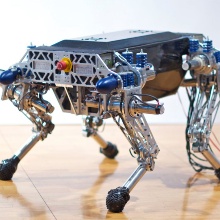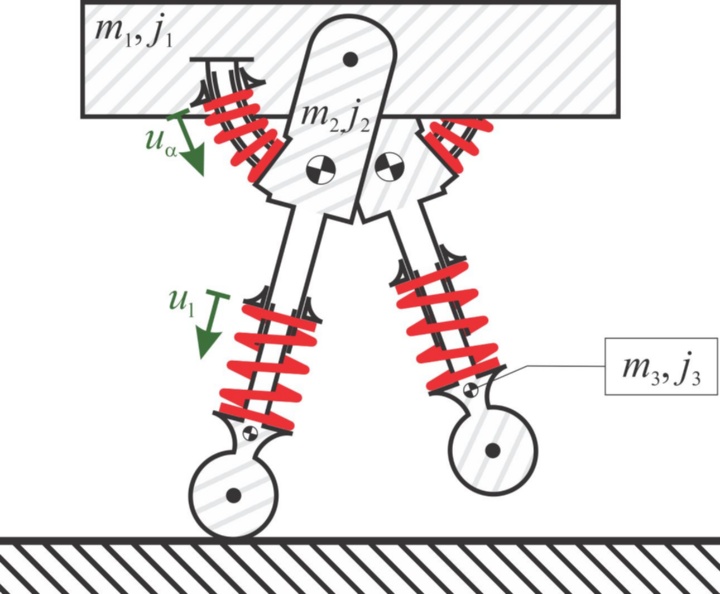- Lecturer:
- Assistant:
- Lecture start:
-
16.10.2023
- Language:
-
English
- Course ID number:
-
340744100
- Time frame:
-
4 SWS, 6 ECTS
This course covers the description of kinematics and dynamics of multibody systems as they are typical for applications in robotics, mechatronics, and biomechanics.
The course provides the theoretical background to describe such systems in a precise mathematical way, while it also pays attention to an intuitive physical understanding of the underlying dynamics. It discusses the tools and methods necessary to create the governing differential equations analytically and it covers a range of computational algorithms that do so in a numerically efficient way. Special attention is paid to the handling of closed loops, collisions, and variying structure.
As part of the exercises accompanying this course, the students will implement their own multibody dynamics engine in MATLAB, using advanced programming techniques that include recursive formulations and object oriented programming. The gained knowledge will enable a creative approach to the design and control of robotic systems. It will enable the students to debug their own solutions more intuitively and understand what is going on when using off-the-shelf software for design or analysis.
The course material will be provided through ILIAS.
Suggested reading:
- Collisions:
- Pfeiffer, F., & Glocker, C. (1996). Multibody dynamics with unilateral contacts
- Remy, C. D. (2017). Ambiguous collision outcomes and sliding with infinite friction in models of legged systems. The International Journal of Robotics Research, 36(12), 1252-1267.
- Flexible links:
- Amirouche, F. (2005). Fundamentals of multibody dynamics: theory and applications.
- Shabana, A. A. (2005). Dynamics of multibody systems.
- Algorithms:
- Featherstone, R. (2008). Rigid body dynamics algorithms
Uses screw-theory, see also: - Murray, R. M., Li, Z., & Sastry, S. S. (1994). A mathematical introduction to robotic manipulation.
- Featherstone, R. (2008). Rigid body dynamics algorithms
- Control using projections:
- Pratt, J., Chew, C. M., Torres, A., Dilworth, P., & Pratt, G. (2001). Virtual model control: An intuitive approach for bipedal locomotion. The International Journal of Robotics Research, 20(2), 129-143.
- Sentis, L., & Khatib, O. (2006). A whole-body control framework for humanoids operating in human environments. In Robotics and Automation, 2006. ICRA 2006. Proceedings 2006 IEEE International Conference on (pp. 2641-2648). IEEE.
- Hutter, M., Hoepflinger, M. A., Gehring, C., Bloesch, M., Remy, C. D., & Siegwart, R. (2012). Hybrid Operational Space Control for Compliant Legged Systems.
- Remy, C. D., Hutter, M., Hoepflinger, M., Bloesch, M., Gehring, C., & Siegwart, R. (2012). Quadrupedal Robots with Stiff and Compliant Actuation. at-Automatisierungstechnik, 60(11), 682-691.
- Dietrich, A., Ott, C., & Albu-Schaeffer, A. (2015). An overview of null space projections for redundant, torque-controlled robots The International Journal of Robotics Research, 34(11), 1385-1400
The schedule will be provided through ILIAS.
- Oral Exam, duration 30 minutes.
- Time and date arranged individually with instructor
- Exam location Pf.9, Room 3.133 (Office Prof. Remy)
- 6 pages (3 sheets, A4) notes.
- No electronic devices (calculator/laptop/phone)
See "Stellung im Studienplan"
Kontakt

C. David Remy
Prof. Dr.



